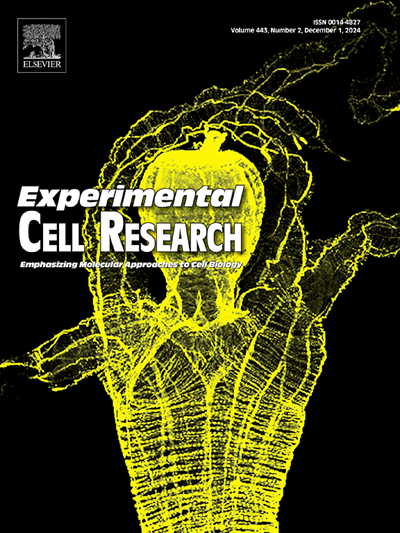Exploring mitonuclear interactions in the regulation of cell physiology: Insights from interspecies cybrids
IF 3.3
3区 生物学
Q3 CELL BIOLOGY
引用次数: 0
Abstract
Brown hares (Lepus europaeus) and mountain hares (Lepus timidus) frequently hybridize in regions where their range overlaps, producing fertile offspring and enabling gene flow between the species. Despite this, no hybrid species has emerged, suggesting that hybrid backcrosses may incur fitness costs. One potential mechanism for such costs involves the interactions between mitochondrial and nuclear gene products, where incompatibilities between species-specific alleles may reinforce species barriers and lead to hybrid breakdown. However, direct experimental evidence for this hypothesis remains limited.
In this study, we used fibroblasts derived from skin biopsies of wild-caught hares to generate cytoplasmic hybrid (cybrid) cell lines, wherein mitochondria and mtDNA from one species were transferred to mitochondria-depleted cells of the other species, creating novel mitonuclear gene combinations while preserving the original diploid nuclear background. Employing a range of techniques – including transcriptomics, metabolomics, microscopy, and respirometry – we explored the consequences of mitochondrial transfer between these hare species. Our results reveal that in the studied species mitonuclear incompatibilities exhibit strong effects on cellular fitness but are limited to specific genotypes. We propose mechanisms of cellular-level incompatibility and their potential consequences for interspecific hybrids, offering new insights into the complexity of mitonuclear interactions.

褐兔(Lepus europaeus)和山兔(Lepus timidus)经常在其分布区重叠的地区杂交,产生可育后代,实现物种间的基因流动。尽管如此,仍未出现杂交物种,这表明杂交回交可能会产生适应成本。造成这种代价的一个潜在机制涉及线粒体和核基因产物之间的相互作用,在这种情况下,物种特异性等位基因之间的不相容性可能会加强物种障碍,导致杂交破裂。然而,这一假设的直接实验证据仍然有限。在这项研究中,我们利用从野生野兔皮肤活检中提取的成纤维细胞生成细胞质杂交(细胞杂交)细胞系,将一个物种的线粒体和mtDNA转移到另一个物种的线粒体缺失细胞中,在保留原始二倍体核背景的同时创造出新的有丝分裂核基因组合。我们采用了一系列技术--包括转录组学、代谢组学、显微镜和呼吸测定法--探索了线粒体在这些野兔物种之间转移的后果。我们的研究结果表明,在所研究的物种中,线粒体核不相容对细胞适应性有很大影响,但仅限于特定的基因型。我们提出了细胞水平不相容的机制及其对种间杂交的潜在后果,为有丝分裂核相互作用的复杂性提供了新的见解。
本文章由计算机程序翻译,如有差异,请以英文原文为准。
求助全文
约1分钟内获得全文
求助全文
来源期刊

Experimental cell research
医学-细胞生物学
CiteScore
7.20
自引率
0.00%
发文量
295
审稿时长
30 days
期刊介绍:
Our scope includes but is not limited to areas such as: Chromosome biology; Chromatin and epigenetics; DNA repair; Gene regulation; Nuclear import-export; RNA processing; Non-coding RNAs; Organelle biology; The cytoskeleton; Intracellular trafficking; Cell-cell and cell-matrix interactions; Cell motility and migration; Cell proliferation; Cellular differentiation; Signal transduction; Programmed cell death.
 求助内容:
求助内容: 应助结果提醒方式:
应助结果提醒方式:


